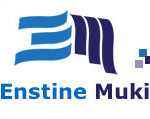In today’s fast-paced digital ecosystem, the demand for real-time insights, data-driven decision-making, and streamlined reporting workflows is higher than ever. As we enter 2025, artificial intelligence continues to revolutionize business intelligence by automating analytics and simplifying complex data sets. AI reporting tools are no longer optional—they’re essential for companies seeking to maintain a competitive edge while reducing operational overhead.
Below, we’ve compiled a list of the 6 best AI reporting tools in 2025. Each tool combines automation, machine learning, and data visualization to transform raw data into actionable insights. Whether you’re a startup, an enterprise, or a data analyst looking to modernize your tech stack, these platforms stand out for their accuracy, usability, and impact.
1. Microsoft Power BI with Copilot AI
Microsoft has integrated Copilot AI into Power BI, making it a leader in automated business analytics. Users can generate reports using natural language queries, get intelligent summaries, and uncover trends without needing to write any code.
- Natural language processing for intuitive querying
- Rich visual dashboards with automated insights
- Tight integration with Microsoft 365 ecosystem
Its seamless use of large language models (LLMs) makes it especially useful for executive teams and non-technical users.
2. Tableau Pulse
Tableau’s new extension, Pulse, is purpose-built to deliver automated updates and predictive analytics. Backed by Salesforce’s AI infrastructure, it combines ease-of-use, cross-platform compatibility, and real-time notifications.
- AI-generated narratives for automated reports
- Slack and email integration for real-time alerts
- Custom metric setup with anomaly detection
Pulse brings proactive insights right where you work, making decision-making more responsive and data-informed.
3. Google Looker Studio with Gemini AI
Formerly known as Data Studio, Google Looker Studio now integrates seamlessly with Gemini AI, offering smarter report building through deep learning and cloud computing.
- AI-powered data blending and transformation
- Collaboration features through Google Workspace
- Custom templates with automated visual enhancements
It’s an excellent choice for teams already using Google Cloud services and looking for a scalable AI reporting infrastructure.
4. ThoughtSpot Sage
ThoughtSpot’s Sage feature introduces conversational analytics powered by Generative AI. This tool allows users to ask complex questions and receive instant visualizations and written insights drawn directly from their datasets.
- Search-based reporting with natural language
- Integrated AI assistants for deeper analysis
- Available for both cloud and hybrid systems
Its real power lies in user autonomy—no need for SQL, code, or data science expertise to extract meaningful intelligence.
5. Domo AI
Domo AI focuses on helping enterprises automate data ingestion, transformation, and visualization. With its machine learning capabilities, companies can uncover patterns, forecast outcomes, and create dynamic reports without manual intervention.
- Predictive modeling and anomaly detection
- Real-time dashboards and mobile access
- Scalable for large-scale enterprise environments
Domo’s low-code approach makes it favored among teams needing speed, flexibility, and security all at once.
6. Polymer Search
Polymer Search is a modern AI reporting tool tailored for smaller teams and independent users. Unlike traditional platforms, it uses AI to auto-create dashboards simply by uploading a spreadsheet.
- Instant dashboard creation without setup
- AI analysis highlights key KPIs and trends
- Best for fast-moving teams with minimal BI overhead
It’s economical and effective—ideal for marketers, entrepreneurs, and analysts wanting quick, AI-assisted insights.
Final Thoughts
In 2025, AI reporting tools have evolved into essential components of data strategy. Whether you’re navigating complex KPIs or enabling business users to explore insights independently, these platforms offer innovative ways to reduce friction and improve clarity. Selection depends largely on organizational size, technical maturity, and the depth of analysis required.
With options ranging from enterprise-grade systems like Power BI and Domo to flexible platforms like Polymer Search, the future of reporting is intelligent, automated, and more accessible than ever before.

